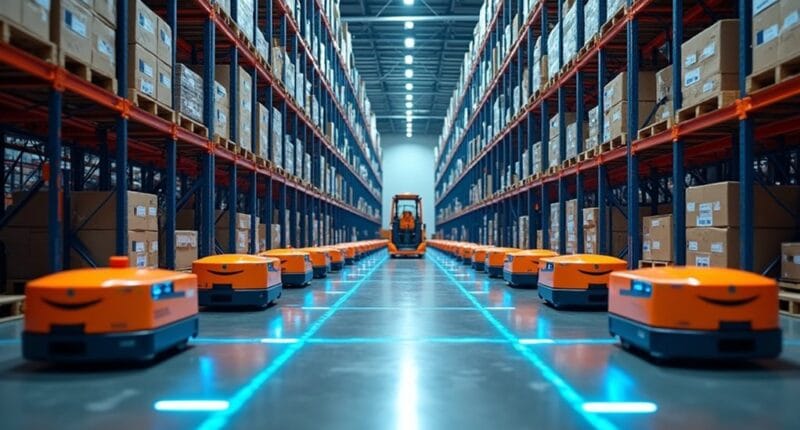Sarah Williams, Amazon’s 38-year-old robotics chief, built a tariff-dodging empire through ruthless supply chain optimization. Her automated fleet spans continents, strategically shifting manufacturing from China to Vietnam, India, and the US. Under her watch, Amazon’s tech-driven logistics network uses real-time data and advanced inventory systems to navigate trade wars. Despite tariff pressures, sales grew 10% in Q1 2025. Turns out robots and strategic sourcing make quite the tariff-busting combo.

Amazon isn’t just playing the tariff game – it’s rewriting the rulebook. The e-commerce giant has built a sprawling network of manufacturing and logistics solutions that would make even seasoned trade warriors jealous.
They’re not messing around with simple workarounds; they’re orchestrating a full-scale supply chain revolution. Gone are the days of relying solely on Chinese manufacturing. Amazon has aggressively expanded its sourcing footprint into Vietnam, India, and Southeast Asia. They’ve even brought some production back home, leveraging U.S. tax incentives for their Amazon Basics line. The company maintains strategic partnerships with key suppliers to better control costs and share tariff burdens.
Smart move, considering the whole tariff mess. But here’s where it gets interesting: Amazon has turned its warehouses into a giant chess game. They’re routing imports through bonded warehouses and Foreign Trade Zones in Texas and California, playing a sophisticated game of “dodge the tariff.”
And they’re not just winging it – they’ve got technology tracking every single move, using real-time data to adjust shipping strategies faster than you can say “customs duty.” The pricing strategy is equally calculated. When tariffs hit, Amazon doesn’t panic. Instead, they’ve developed a surgical approach to price increases, typically 3-5% on products where customers won’t bolt at the sight of a higher price tag. Amazon’s sales grew 10% in fiscal Q1 2025 despite the intense tariff pressures.
They’re constantly benchmarking against competitors, making sure they don’t price themselves out of the market. Their inventory management is nothing short of obsessive. Using advanced platforms like SoStocked and Netstock, they’re analyzing sales velocity data to avoid getting stuck with tariff-heavy goods.
And when they smell new tariffs coming, they’re not above a little strategic stockpiling of their best-sellers. The recent easing of U.S.-China tariffs (down from a whopping 145%) has been like finding money in the couch cushions for Amazon sellers.
But don’t think for a second that Amazon is letting its guard down. They’re still maintaining their diversified manufacturing base and complex logistics network. Because in the world of international trade, you never know when the next curveball is coming.


